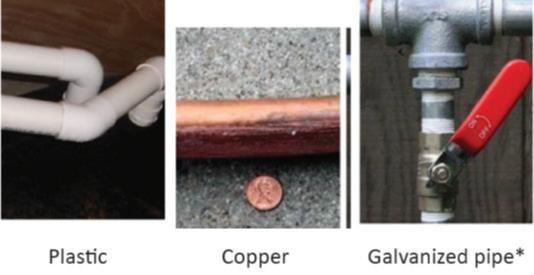
2 minute read
Understanding Lead and Copper Regulations
In late 2021 the U.S. Environmental Protection Agency (EPA) published Lead and Copper Rule Revisions (LCRR) to strengthen the current rule from 1991 to effectively reduce lead and copper levels in drinking water. The revisions focus on minimizing exposure to lead and copper by requiring more stringent sampling, compiling an inventory of lead service lines (LSLs) and a plan so that these could be prioritized, and lastly having strong public outreach to inform customers of these efforts. Columbia Water put together a task force in late 2021 comprised of many groups in our organization so that these requirements are met by October 16, 2024. This figure shows what type of information we need to capture in our inventory. The materials for both the city side and customer side of the service line must be known and documented and provided to S.C. Department of Health and Environmental Control.
Non-lead materials can range from galvanized pipe, plastic to copper. While we capture and maintain this information for many of our lines, from projects or work done at different sites, many of these are unknown materials. Although our service lines are non-lead, we still need to collect information on the unknowns. To-date, we are down to 13,000 from 36,000 and so far, have not encountered LSLs, we have however located goosenecks. Goosenecks are flexible connectors made of lead, these are not accounted for as LSLs, but they are tracked, removed, and will be sampled in preparation for the LCRR to take effect. Furthermore, the EPA plans to further strengthen this rule by setting forth LCR improvements or LCRI. These will possibly strengthen the requirements we will have to meet to follow Safe Drinking Water Standards.






